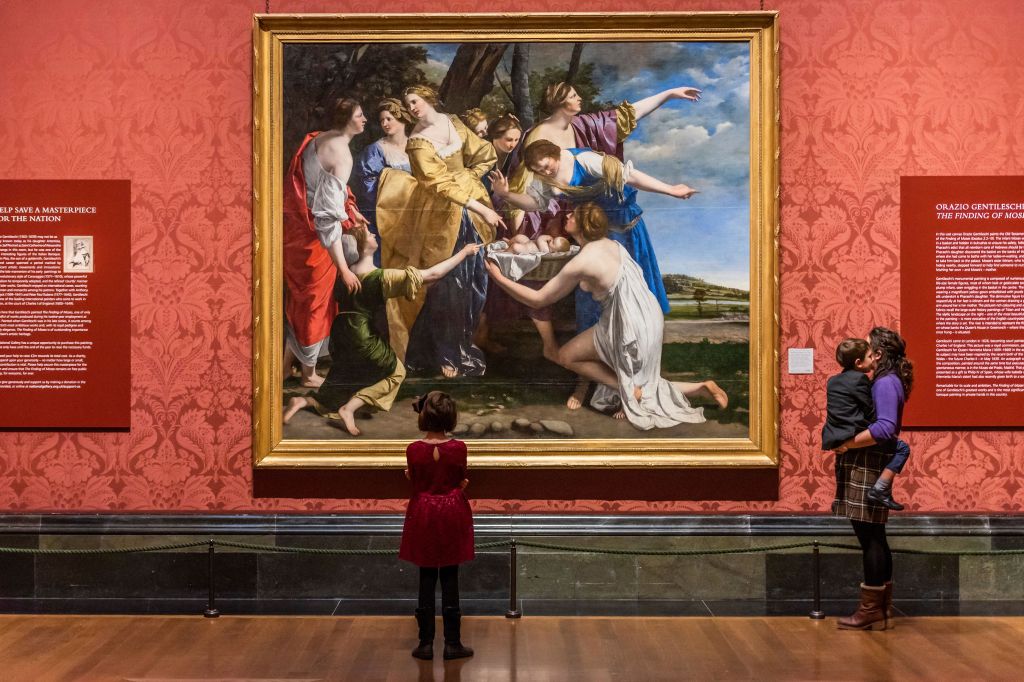[ad_1]
Since 1995, the National Gallery in London has been trying to acquire the Italian Baroque painter Orazio Gentileschi’s work The Finding of Moses (ca. early 1630s). At long last, after a fundraising campaign and more than 20 years of trying, the museum has finally bought the artwork.
On Wednesday morning, the museum announced that it had successfully raised the £19.5 million (around $25.5 million) needed to buy the painting. “I congratulate the National Gallery and everyone who has helped make this happen,” said Nicky Morgan, the UK’s culture secretary.
The enormous canvas—it measures 8 feet high—has been on loan to the gallery since since 2002, though the museum’s efforts to buy the work go back even farther than that, with the institution making steps toward acquiring the painting as early as 1995. Earlier this year, the museum had launched a public fundraising campaign to gain the remaining funds that would make the purchase possible.
“From the small gifts of a few pounds to those of many thousands, I am really thrilled that so many people have contributed in the last lap of the campaign to enable us to acquire the painting for the nation,” Gabriele Finaldi, the museum’s director, said in a statement sent out in a release that called the painting’s acquisition a “Christmas present.” “Big donors and little ones have ensured that The Finding of Moses can be enjoyed by everyone; our thanks to all of them.”
The Art Newspaper has reported that the The Finding of Moses was being sold by Graham Kirkham, an English businessman who made his wealth through the sofa retailer DFS, with the deal arranged by Sotheby’s and Pyms Gallery in London. The Gentileschi was originally valued at £22 million (around $28.7 million), but the tax advantages of a private treaty sale reduced the net cost to £19.5 million.
The work was commissioned in the early 17th century by Charles I to celebrate the birth of the future Charles II, during Gentileschi’s 12-year residence in London. It ultimately hung in the Queen’s home in Greenwich. Gentileschi depicts the discovery of Moses’ basket on the Nile’s riverbank, though some historians have suggested that the surrounding environment more resembles the Thames than the Egyptian waterway.
The Finding of Moses will soon be moved to the National Gallery’s renovated Baroque room, which is due to be completed in April 2020 in time for the first major retrospective on Gentileschi’s daughter, the artist Artemisia Gentileschi. In July, the institution purchased Artemisia’s Self-portrait as Saint Catherine of Alexandria (1615–17), for £3.6 million (roughly $4.7 million), setting a new auction record for the artist.
[ad_2]
Source link

